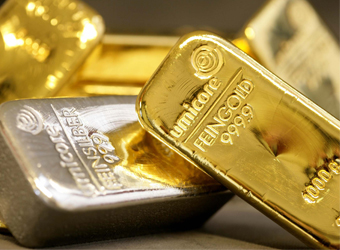Spot gold was down 0.23 percent at $1,283.96 per ounce by 1:30 p.m. ET while U.S. gold futures fell 0.16 percent to $1,286.60 per ounce.
Spot gold was on track to register a 2.8 percent decline in September, its largest monthly fall so far in 2017 and the biggest since November 2016, after the dollar strengthened.
However, it was set to end the quarter 3.5 percent higher as it rallied in July and August, partly due to geopolitical tensions including North Korea’s missile tests.
U.S. data showed inflation remained benign in August with the core personal consumption expenditures (PCE) price index rising 1.3 percent year-on-year, after advancing 1.4 percent in July.
The core PCE is the Federal Reserve’s preferred inflation measure and has a 2 percent target.
Gold is highly sensitive to rising U.S. interest rates, which increase the opportunity cost of holding non-yielding bullion, while boosting the greenback. Friday’s data, however, hardly dimmed prospects of a rise, with financial markets pricing a roughly 71 percent probability of an interest rate hike in December, compared with 76 percent earlier, according to the CME FedWatch tool.
Friday’s data, however, hardly dimmed prospects of a rise, with financial markets pricing a roughly 71 percent probability of an interest rate hike in December, compared with 76 percent earlier, according to the CME FedWatch tool.
Further downside in gold was likely limited, said Jens Pedersen, senior analyst at Danske Bank in Copenhagen.
“You have these looming geopolitical tensions around North Korea, Iran, that can flare up any time. That’s an argument against selling gold lower,” he said.
Meanwhile, palladium gained 0.59 percent to $934.47 per ounce. It was up 11 percent for the quarter and 38 percent so far in 2017.
Platinum fell 0.98 percent to $910.49 per ounce. The metal is set for an 8 percent drop for September, its worst-performing month since August 2016.
Palladium traded at a premium to platinum for a third straight day after prices for the two metals hit parity for the first time since 2001 on Wednesday.
“We have held the view that although palladium would overtake platinum in the short term, the latter should ultimately regain its premium,” said analyst Joni Teves at UBS.
“A rebound in gold would drag platinum higher and is the most likely trigger for a correction in PGM [platinum group metals] relative prices in the near term.”
Highlighting investors’ bullish attitude to palladium, exchange-traded fund holdings in the metal showed the first quarterly inflow since the second quarter of 2015.
Silver sunk 0.83 percent to $16.69 per ounce and was on track for a 4.7 percent loss on the month, but was set to end the quarter 1 percent higher.
Source: Reuters



